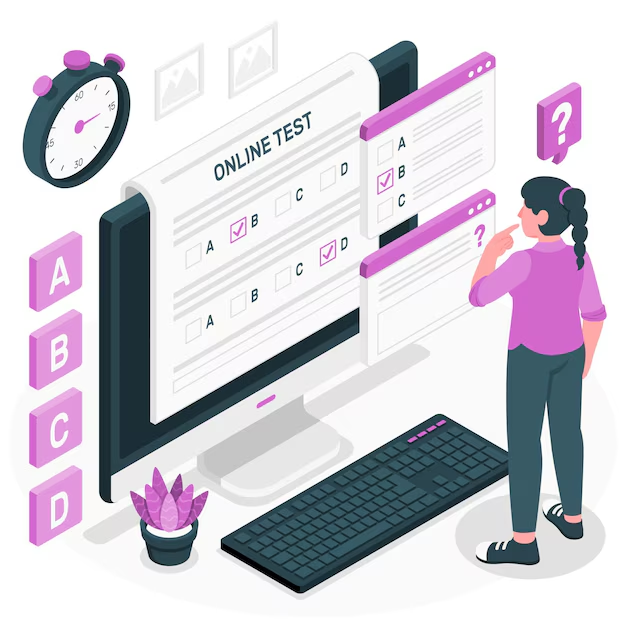Introduction
A. Overview of Agile Development
Agile development has revolutionized the software industry, offering a flexible and efficient approach to building and delivering high-quality software products.
Unlike traditional waterfall methodologies, Agile focuses on iterative and incremental development, allowing teams to adapt to changing requirements and deliver value to customers faster.
Agile methodologies, such as Scrum and Kanban, emphasize collaboration, continuous improvement, and customer-centricity, making them ideal for today’s dynamic and fast-paced development environments.
B. Significance of Test & Measurement in Agile
In Agile development, the importance of integrating test and measurement cannot be overstated. Testing ensures that each iteration of the software meets quality standards, while measurement provides valuable insights into the development process and product performance.
Together, test and measurement help maintain a balance between speed and quality, ensuring that the final product is not only delivered on time but also meets or exceeds customer expectations.
By incorporating robust testing practices and precise measurements throughout the Agile lifecycle, teams can identify issues early, reduce technical debt, and continuously improve their processes and products.

Key Principles of Agile Development
A. Iterative and Incremental Development
One of the foundational principles of Agile development is its iterative and incremental approach. Instead of delivering the entire product at once, Agile teams develop software in small, manageable pieces called iterations or sprints, typically lasting two to four weeks.
Each iteration includes planning, development, testing, and review phases, allowing teams to deliver functional increments of the product. This approach not only facilitates continuous delivery of value to the customer but also allows for regular feedback and adjustments, ensuring the final product aligns closely with user needs and expectations.
B. Collaboration and Communication
Agile development thrives on strong collaboration and communication among team members and stakeholders. Cross-functional teams, including developers, testers, designers, and product owners, work together closely, often co-located or connected through efficient communication tools.
Daily stand-up meetings, sprint planning sessions, and retrospectives foster a culture of transparency and accountability, enabling teams to quickly identify and resolve issues, share knowledge, and make informed decisions.
Effective communication ensures everyone is aligned with the project goals and can contribute their expertise to achieve a common objective.
C. Continuous Improvement and Adaptation
A core tenet of Agile is the commitment to continuous improvement and adaptation. Agile teams regularly reflect on their processes and performance, identifying areas for enhancement and implementing changes in subsequent iterations.
This is often achieved through sprint retrospectives, where the team discusses what went well, what didn’t, and how they can improve. By embracing a mindset of continuous learning and adaptation, Agile teams can respond to new information, changing requirements, and unexpected challenges, ensuring that they remain efficient and effective throughout the project lifecycle.
D. Customer-Centric Approach
Agile development places a strong emphasis on delivering value to the customer. By involving customers and stakeholders in the development process, Agile teams ensure that the product meets real user needs and expectations. Regular feedback loops, such as sprint reviews and demonstrations, allow customers to see progress, provide input, and make adjustments as needed.
This customer-centric approach not only improves satisfaction but also reduces the risk of building features that do not align with user requirements. Ultimately, Agile aims to deliver a high-quality product that provides maximum value to the customer.
Challenges of Integrating Test & Measurement in Agile
A. Rapid Iteration Cycles
Agile development is characterized by rapid iteration cycles, where teams aim to deliver functional increments of the product within short time frames, typically two to four weeks.
While this approach enhances flexibility and responsiveness, it also poses significant challenges for integrating test and measurement. Testing must be thorough yet swift to keep up with the pace of development.
Traditional testing methods, which often require lengthy planning and execution phases, may not fit well within these compressed timelines. As a result, Agile teams need to adopt more efficient testing strategies, such as automation and continuous integration, to ensure that quality is maintained without slowing down the development process.
B. Maintaining Test Coverage
In Agile environments, where changes to the codebase are frequent and often substantial, maintaining comprehensive test coverage can be challenging. As new features are added and existing ones are modified, the scope of testing must continuously evolve to cover all aspects of the application.
This requires a dynamic and adaptable testing approach that can quickly identify and address gaps in coverage. Moreover, the pressure to deliver increments rapidly can sometimes lead to compromises in testing thoroughness, increasing the risk of undetected defects.
Agile teams must strike a balance between speed and coverage, leveraging automated tests and continuous testing practices to ensure that no critical areas are left untested.
C. Balancing Speed and Quality
One of the most significant challenges in Agile development is balancing the need for speed with the imperative of maintaining high quality.
Agile teams are under constant pressure to deliver functional increments quickly, but this should not come at the expense of product quality. Integrating test and measurement into the Agile process helps in monitoring and ensuring quality, but it requires a strategic approach.
Teams must prioritize testing activities, focusing on high-risk areas and leveraging automation to handle repetitive tasks. Continuous feedback loops, facilitated by regular testing, enable teams to identify and address issues promptly, ensuring that quality remains high even as development speeds up.
D. Evolving Requirements
Agile development embraces change, with requirements often evolving based on customer feedback and changing market conditions. While this flexibility is a key advantage, it also complicates the integration of test and measurement.
Testing strategies and metrics that were relevant at the beginning of a project may become obsolete as requirements shift. Agile teams need to be adaptable, continuously revisiting and revising their test plans and measurement criteria to align with the latest requirements.
This requires a proactive approach to testing, where teams anticipate changes and prepare to adjust their strategies accordingly, ensuring that testing remains relevant and effective throughout the project lifecycle.
Best Practices for Integrating Test & Measurement in Agile
A. Shift-Left Testing Approach
One of the most effective strategies for integrating test and measurement in Agile is adopting a shift-left testing approach. This practice involves moving testing activities earlier in the development lifecycle, starting from the initial stages of requirement analysis and design.
By involving testers early on, teams can identify potential issues and ambiguities before they become costly problems. Shift-left testing ensures that testing is an integral part of each iteration, facilitating early detection of defects and enabling more efficient use of testing resources.
This approach not only improves product quality but also accelerates development by reducing the number of defects that need to be addressed later in the process.
B. Automated Testing
Automation is a cornerstone of successful Agile testing. Given the rapid pace of Agile iterations, manual testing alone cannot keep up with the demand for quick, thorough testing. Automated tests, particularly for regression and repetitive tasks, help ensure that the code remains stable and functional as new changes are introduced. Automation allows teams to run tests frequently and consistently, providing immediate feedback on the impact of code changes.
Tools like Selenium, JUnit, and Jenkins are widely used to automate testing processes, enabling continuous integration and continuous delivery (CI/CD) pipelines.
By automating routine tests, teams can focus their manual testing efforts on exploratory and usability testing, where human insight is most valuable.
C. Continuous Integration and Continuous Testing (CI/CT)
Continuous Integration (CI) and Continuous Testing (CT) are fundamental practices for Agile teams. CI involves regularly merging code changes into a central repository, followed by automated builds and tests to detect integration issues early.
This practice ensures that the codebase is always in a deployable state and minimizes the risk of integration problems. Continuous Testing complements CI by running automated tests at every stage of the CI/CD pipeline.
This approach provides real-time feedback on the quality and functionality of the code, allowing teams to detect and fix issues immediately. Implementing CI/CT requires a robust set of tools and a commitment to maintaining high-quality automated tests.
D. Collaborative Testing
Agile emphasizes collaboration, and this principle extends to testing as well. Collaborative testing involves developers, testers, and other stakeholders working together throughout the development process.
Techniques such as pair testing, where a developer and tester work together to test a feature, and mob testing, where the whole team participates in testing activities, can enhance the quality and efficiency of testing. Collaborative testing ensures that testing is not seen as a separate phase but as an integral part of the development process.
This approach fosters shared responsibility for quality and leverages diverse perspectives to uncover issues that might be missed in a siloed testing environment.
E. Metrics and Measurements
In Agile, metrics and measurements play a crucial role in tracking progress, evaluating performance, and driving continuous improvement. Key performance indicators (KPIs) such as test coverage, defect density, test execution times, and the number of automated tests can provide valuable insights into the effectiveness of the testing process.
These metrics help teams identify areas for improvement and make data-driven decisions. It’s important to select metrics that align with the team’s goals and to use them not as a means of control but as tools for enhancing understanding and guiding action. Regularly reviewing and adjusting these metrics ensures they remain relevant and supportive of the team’s objectives.
Integrating test and measurement in Agile development requires a strategic approach, leveraging best practices such as shift-left testing, automation, CI/CT, collaborative testing, and effective use of metrics.
By adopting these practices, Agile teams can ensure that quality is built into the product from the outset, enabling them to deliver high-quality software rapidly and efficiently.
Conclusion
Integrating test and measurement into Agile development is essential for maintaining high-quality software and efficient delivery. By adopting best practices such as shift-left testing, automated testing, continuous integration and continuous testing (CI/CT), collaborative testing, and effective use of metrics, Agile teams can create a robust and adaptive testing environment.
These practices help balance the need for speed with the imperative of quality, enabling teams to deliver reliable software that meets and exceeds customer expectations.
As Agile methodologies continue to evolve, the focus on continuous improvement and adaptability will drive the adoption of new tools and techniques, ensuring that Agile teams remain at the forefront of software quality and innovation.
The landscape of test and measurement in Agile development is continuously evolving, with emerging technologies like AI and machine learning beginning to play significant roles in automating complex testing scenarios and providing deeper insights.
Additionally, the rise of DevOps practices necessitates even closer integration of testing and measurement throughout the software lifecycle. Agile teams are encouraged to foster a culture that values quality and continuous improvement, ensuring that testing is a continuous, integral part of the development process.
This approach not only leads to more reliable, high-quality products but also enhances customer satisfaction and drives long-term success.












